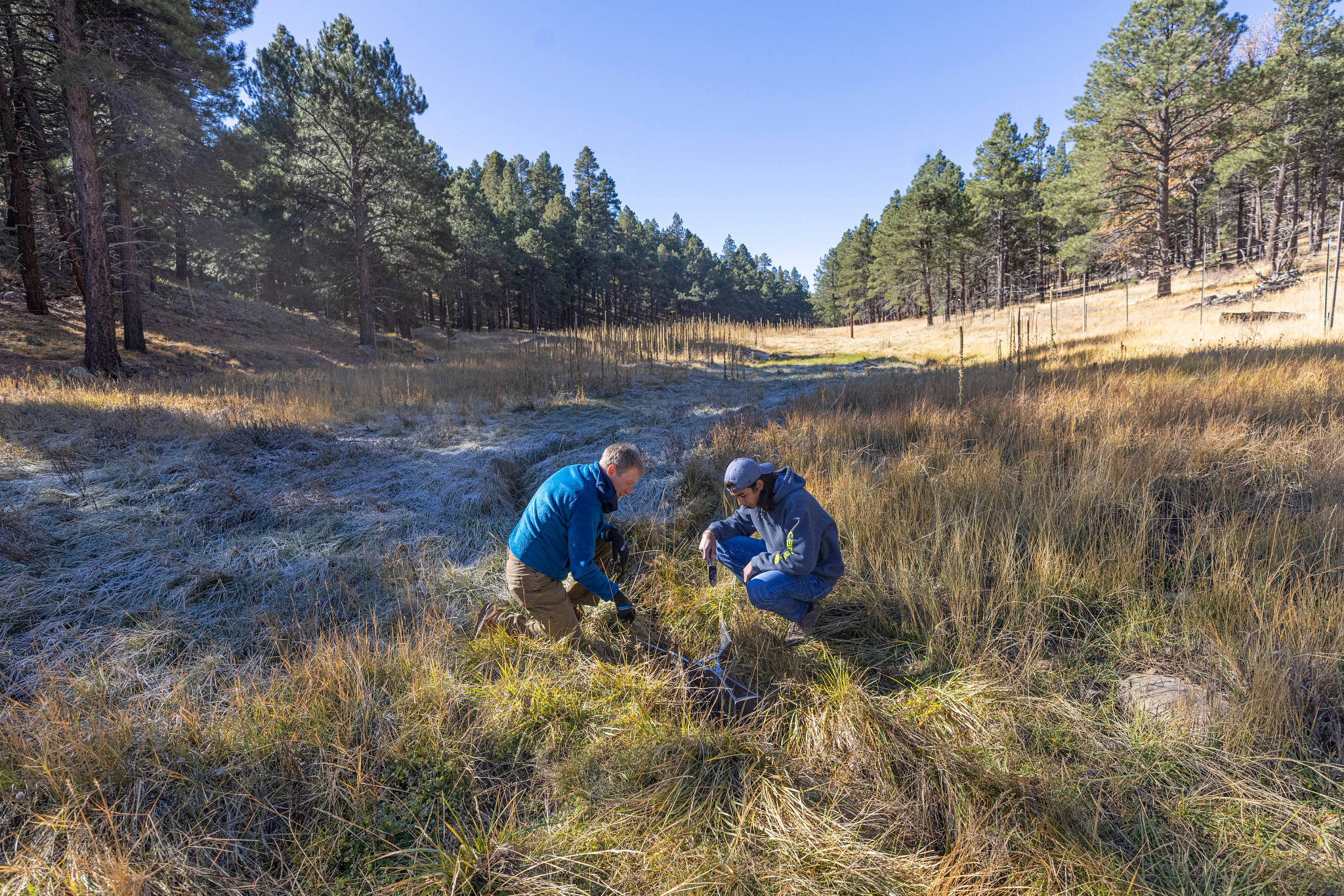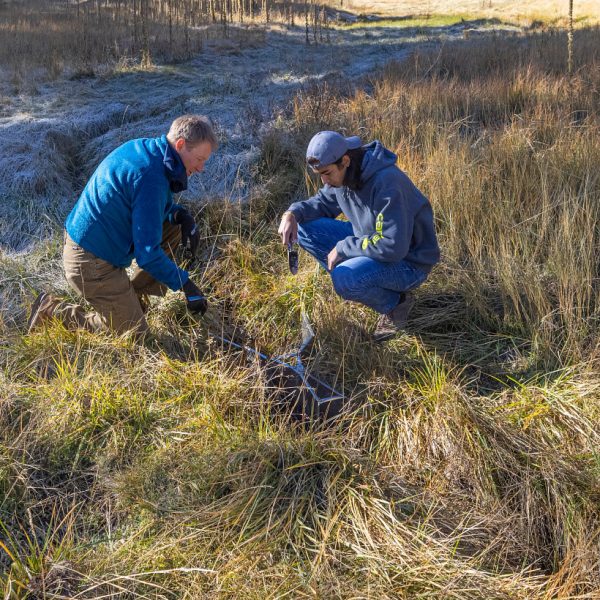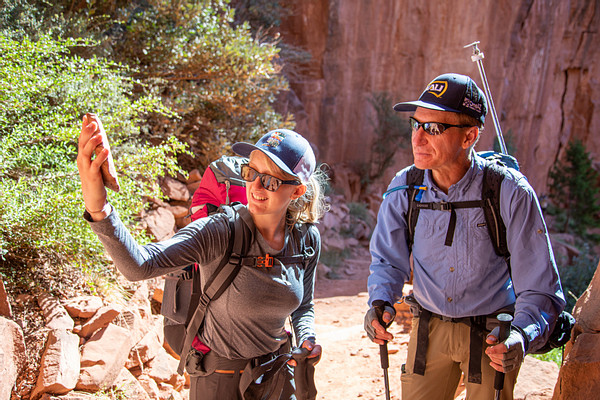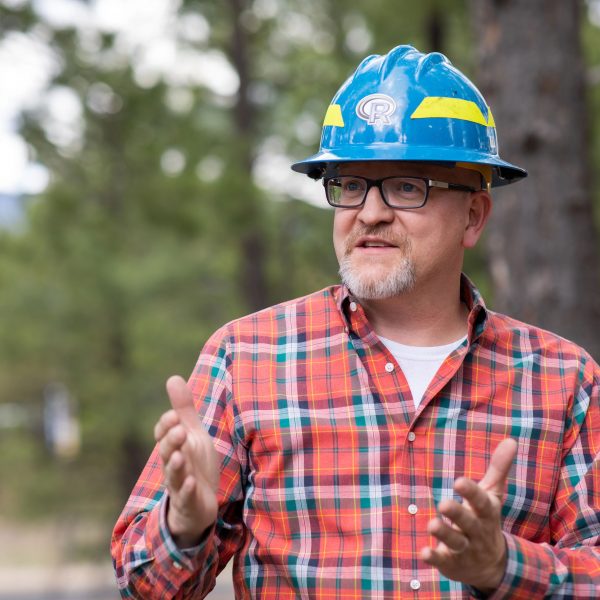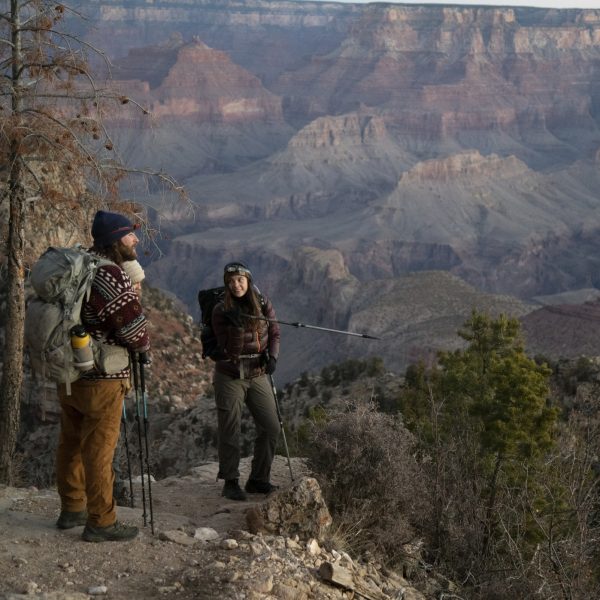NAU researchers study Arizona’s spring ecosystems and ask the question: what are these natural resources worth?
An ambitious multidisciplinary project is currently unfolding at NAU. Headed by Principal Investigator Professor Julie Mueller, a resource economist, and co-Principal Investigators Professor Abe Springer, a hydrogeologist, and Assistant Professor Ryan Fitch, an environmental and developmental economist, the team also includes Graduate Assistant Katelyn LaPine, a geologist and GIS specialist, and Graduate Assistant Andrew Lewis, an economist and geologist.
The study, titled “Non-Market Valuation of Spring Ecosystems in the Coconino and Kaibab National Forests,” is sweeping in scope, utilizing both long-term data and a nationwide survey. The team is drawing upon previous research by Springer, which culminated in 20 years’ worth of data on spring ecosystems in northern Arizona. Simultaneously, they’re developing a survey that will capture the voice of Americans across the country as they weigh in on the value these ecosystems have to them. The latter involves the construction of a questionnaire, which the team is creating with the input of stakeholders who utilize the Arizona springs—including ranchers, Arizona Game & Fish and US Forest Service professionals, and several Native groups.
“We’re designing a survey that will be sent out nationwide about the springs in the Coconino and Kaibab National Forests. People will choose attributes which are correlated with the dollar amount that is most important to them. So maybe someone cares more about recreation, or another person cares about Tribes using a spring for cultural significance reasons, and says, ‘I would pay extra money for that spring to be protected,’” says Lewis.
Management scenarios
LaPine expands on this, saying that “once we get all of those values from the survey, we’re going to plug it into Geographic Information System software, or GIS, which is where I step in. I’ll map our results for different management scenarios.”
LaPine will use the mapping data from GIS to create management recommendations for the spring ecosystems. “I’ll create a hot spot map to see which springs have the most value and where we could allocate, for example, different grazing lands,” she says.
Fitch explains that the main goal of the project is to answer the question, “Are there better ways to manage these springs relative to what society might want?”
Estimating values for natural resources is an important tool in creating policy and law, and provides a useful way to discuss something complex—like an ecosystem—in the more easily understood framework of numbers and economics.
“When numbers are involved and we can put dollars and cents on things, I think that from a policy perspective, it’s easier to make decisions on costs and benefits,” Fitch says.
He notes that environmental costs, such as the monetary value of converting land into housing or cleaning up an oil spill, are often clear, but that “many of the benefits that we receive from natural resources don’t have an economic value. What is the economic value of the aesthetics for the San Francisco Peaks? What is the value of water coming out of the inner basin to Flagstaff?”
Fitch clarifies that the study is not trying to assign a single or overall value to the springs, but rather “looking at the economic value of the different attributes of the spring: the recreational value, the biodiversity, the wildlife aspects, and others. We talk about the trade-offs of the different attributes that a spring provides, and that’s where we’re going to try to pinpoint, ‘What is the value of a spring?’”
This and other research on assigning value to natural resources is critical. “If we can start looking at those other social benefits that we receive, I think we’re going to be able to make progress in convincing policymakers why some of these projects are important to undertake,” Fitch says.
Defining an ecosystem
Combining these disparate elements into one study carries promise but also unique difficulties. One of the challenges the team faced was defining what a spring is in order to condense a range of highly varied ecosystems onto a brief survey.
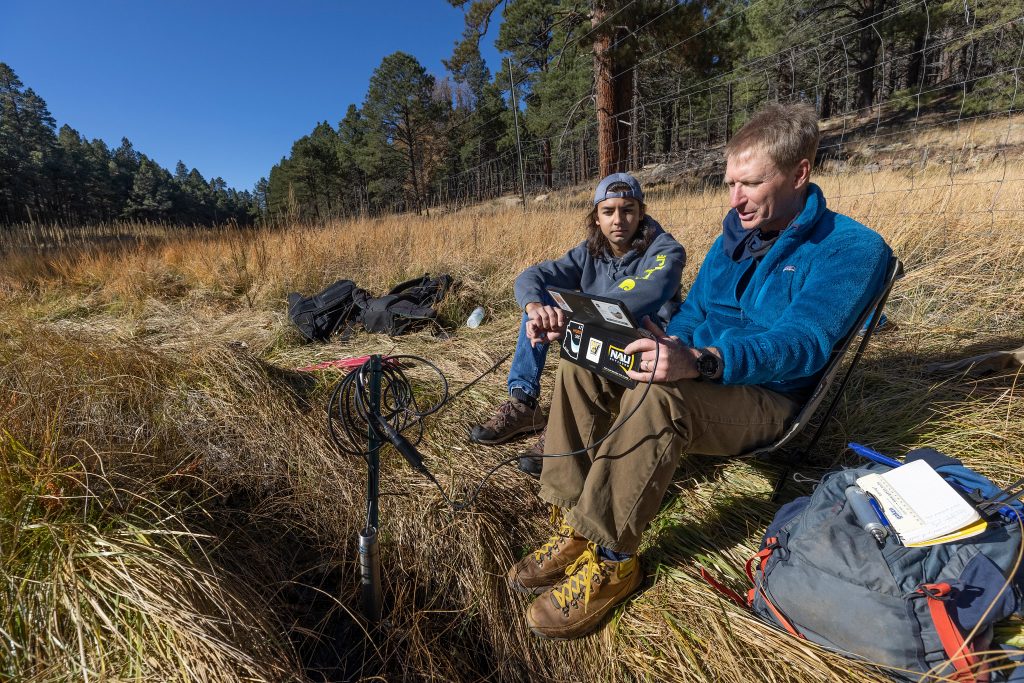
“Some are completely wet meadows that have a little trickle through them. Some in the Grand Canyon (which is outside the geographical range of this project) are these huge flowing rivers. The variety of springs in these and the Coconino and Kaibab is amazing,” says Lewis.
In addition, some of the springs are in highly grazed areas used by cattle, or are surrounded by a man-made barrier. Others exist in natural areas and have a high value for biodiversity.
Ultimately, the team defined a spring as “a point where water originates or emerges from the Earth’s surface and supports an ecosystem,” says LaPine, a definition which captures their sometimes extreme variation.
Another challenge is gathering stakeholder feedback and condensing it into a questionnaire for the nationwide survey.
While the feedback reflects disparate interests, Lewis notes that “most people want sustainability, whether they realize it or not. If someone’s a rancher, they want that water source to survive and be continually healthy for their cattle. Maybe someone from Game & Fish wants to ensure hunting and fishing permits can continue to be sold—the main interest there is still to protect the stream. Boiling it down, a lot of people have the same interests, even if they’re from different groups.”
The questionnaire will be organized around a number of key motivators identified during the stakeholder meetings. “Cultural significance is one. Climate change resilience is another. Recreation municipal use, biodiversity, biological habitat, flow rate…all of the attributes that will be used in the development of the survey have come from focus groups,” Lewis says.
Ultimately, the team hopes to generate nationwide interest in these critical Arizona water resources and increase their protection by raising awareness.
“I hope the survey achieves a better understanding of some of the values that people derive from springs. If we raise awareness that there are these non-market values out there that people want to preserve and would be willing to pay some amount for, maybe that can help drive policy in the direction of the values that people place on them,” says Fitch.

